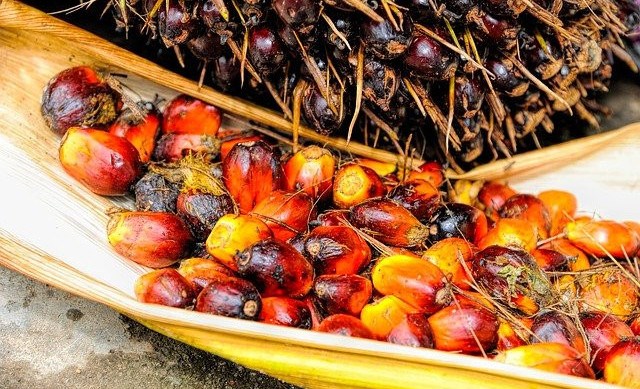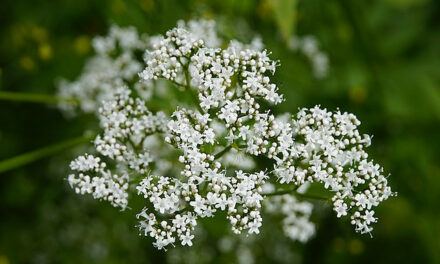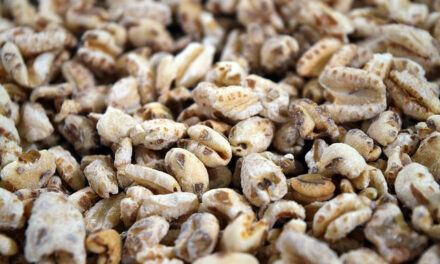Being one of the most consumed vegetable oils in the world, Palm oil is known for its diversity compared to other cooking oils. But, how much do we know the effects of palm oil on diabetes? Is palm oil good for diabetics? Or is it Bad compared with other popular oils? This guide will explain it all….
In the past, aside from being a major ingredient in meals, it was used and purchased for its viscosity owing to its use as lubricants domestically and industrially. Palm oil has been used in the production of soap, as it’s still used to date in some parts of the world.
Palm oil forms a major part of some country’s export and the gross domestic profit of countries in developing parts of the world, as it’s the only oil plant that produces more oil for a land hectare compared to other oil plants.
Apart from its culinary and industrial use, palm oil is increasingly sought after for its medicinal properties.
Before looking into how palm oil relates to people with diabetes, let’s find out more about palm oil itself.
What is Palm Oil?
Palm oil is a vegetable oil derived from the fruits of Elaeis guineensis, the botanical name for the African palm oil plant. Palm oil is also extracted from the fruits of the American oil palm or the Maripa palm, though not as common as the African oil palm.
The African oil palm is the primary producer of palm oil in the world, it grows extensively in tropical Africa, and is also cultivated in Asia and Indonesia.
It produces palm oil from three different varieties;
- the Dura palm which has little pulp and thick kernel shells,
- the Pisifera palm with thick pulp and no kernel shell and
- the Tenera Palm, a hybrid of the Dura and Pisifera-with thick pulp and thick kernels with thin shells.
In other words, for higher yield of palm oils, the Tenera palm is usually cultivated which give both rich oils from the fleshy pulp and oil from the thick kernel shell.
Palm oil is a major ingredient in fast foods around the world, as it is preferred to other vegetable oils which are hydrogenated and harmful to one’s health, it is as well, free from Trans-fat. Palm oil, however, could refer to the umbrella term for all oils produced from the oil palm.
Types and Varieties of Palm Oil
There are 2 varieties of oils produced from oil palm; Palm oil and Palm kernel oil. These oils are derived from different parts of the oil palm fruit, which explains the different characteristics and chemical compositions of these oils.
While palm oil is extracted from the fleshy pulp of the fruit, palm kernel oil is extracted from the stony kernel within this fruit. It is important to know these oil varieties to differentiate them.
Palm oil is semi-solid at room temperature while palm kernel oil is solid at room temperature due to their contents of saturated fat.
While palm kernel oil contains about 80% saturated fat, palm oil contains only 50%. This makes palm oil a better choice of vegetable oil for cooking than palm kernel oil, as excess saturated fat in the arteries is harmful. Also, making palm kernel oil better for industrial purposes like soap and candle making.
Palm oil has an orange colour because of its rich content in carotenoid, which is beneficial to one’s health. Palm kernel oil, however, is a clear or light yellowish fat indicating its lack of carotenoid.
Palm oil could also vary based on the finished and marketed products. Palm oil gotten from the fruit of oil palm is referred to as red palm oil-RPO, crude palm oil or just palm oil. However, when it is processed and refined, it is called white palm oil or RBDPO-Refined, Bleached and Decolorized Palm Oil.
The rich reddish colour of palm oil is absent in this variety called white palm oil. White palm oil is refined and processed crude palm oil. It contains only a little or no carotenoid and thus, have a light yellowish color. White palm oil popularly known as RBDPO, is the primary palm oil commodity sold in the world’s commodity market.
Most Palm oil industries produce this processed and refined palm oil, white oil, as it preferred by most users to crude palm oil, not because of its nutrient content, but for its appearance and smell. For the crude palm oil can have a pungent smell which can be unwelcoming and unpleasant to some of its consumers.
Furthermore, Crude palm oil also contains what is called FFA-Free fatty acid (about 5% of it), trace metals and other impurities. Refining this palm oil will eliminate the bright red color, the aroma of the oil, and other impurities contained. It will also reduce the FFA content to about 0.1%.
Palm Oil Nutrient Contents
However, the different varieties of palm oil, it is the health and nutritional content of the Red palm oil that will be expressed in this article based on new findings.
Red palm oil, RPO, regarding its nutrient content is very different from its refined counterpart. The process of refining crude RPO destroys up to half of the numerous antioxidants present in RPO, making it less rich. One to name is vitamin E and pro-vitamin A, which are destroyed in the refining process. These two, are known to be responsible for the health benefits associated with palm oil.
Red palm oil contains;
- Vitamin
Red palm oil is the highest plant source of Pro-vitamin A carotenoid.
The carotenoid found in RPO includes; beta-carotene, alpha-carotene, lycopene, phytoene and others.
These compounds are majorly responsible for all health benefits associated with palm oil, as they are also rich antioxidants. It is the best source of vitamin A for a deficient person.
Red palm oil is as well rich in vitamin E (Tocopherol and Tocotrienol), with the highest percentage compared to all other sources.
- Saturated Fat
Red palm oil contains about 50 % of saturated fat.
Palmitic acid, stearic acid and myristic acid make up this percentage, with palmitic acid contributing the most to this percentage. This relatively high content of saturated fat has brought misconceptions to the health benefits of palm oil. However, it is found that the high Pro-vitamin carotenoid and the other antioxidants of palm oil is well enough to balance the saturated fat, as the cardiovascular risk linked to high intake of saturated fat could be reversed by the anti-oxidants and vitamins.
- Unsaturated Fat
Red palm oil contains both monounsaturated fat as in oleic acid and polyunsaturated fat as in linoleic acid, forming about 54% of the fatty acid in RPO.
- Calories
A single tablespoon of palm oil is said to contain 120 calories as a result of the amount of fat it contains, thus providing enough needed energy to its consumers.
Health Benefits of Palm Oil
Research has shown that the regular intake of palm oil has many benefits to our health.
These benefits include;
- Enhance vitamin A Deficiency
Beta-carotene is one of the carotenoids abundant in red palm oil.
Beta-carotene turns into vitamin A in the body and thus helps to rejuvenate any vitamin A deficiency.
Red palm oil is usually recommended for pregnant women as a source of vitamin for them and their babies.
- Decrease cholesterol level in the body
High cholesterol in the body is known to increase the risk of heart disease and cardiovascular ailments. Research says that Red palm oil helps to reduce the cholesterol level of the blood by reducing both triglycerides and LDL cholesterol by about 15%.
- Enhance brain function
The tocopherols, vitamin E, abundant in palm oil has great imparted to the cells of the brain. This anti-oxidant, not only improve cognitive functions like increased concentration and memory, but it also aids in improving the mental performance of patients with Alzheimer’s disease and aged persons.
- For skin and hair treatment
The vitamins and anti-oxidants in palm oil make it suitable for obtaining a healthy skin and desirable hair texture, as vitamin E is a central ingredient in skincare products.
Tip: Remember, while essential oils can be useful for your well being, there are a few essential oils to be avoided with diabetes.
Palm Oil Effect on Diabetes
Parked with so much anti-oxidants, palm oil renders health advantages to diabetics as well. Diabetes is an ailment caused by the body not being able to convert sugar into energy. Thus, when sugar is taken in, it is retained in the blood. Excess sugar in the blood is harmful to one’s health as it could lead to the destruction of various body organs like the eyes, the heart, blood vessels and the kidneys.
Diabetes comes in two forms, diabetes type-1 and diabetes type-2. In type-1 diabetes, the hormone needed to convert these sugar, insulin, is deficient. Diabetes type-2 is caused by the body not responding actively to insulin signals, and so sugar is retained in the blood.
A 2016 animal study carried out by Olabiyi Folorunso Adewale et al., has proven that the use of palm oil as a supplement to diabetics will produce a substantial decrease in blood sugar level. Thus, adding palm oil to meals for those whose blood sugar level is above 150mg/dl would significantly reduce the blood sugar level and further prevent the risk of developing diabetes for pre-diabetics.
A good deal of research has shown that the antioxidants present in palm oil is responsible for reducing the blood sugar level in diabetics. Among the numerous palm, oil anti-oxidants is polyphenols, referred by some as a “healing” compound.
Polyphenols is a plant-based compound, it is a group of anti-oxidants which makes up two classes which are flavonoids and non-flavonoids. Flavonoids are further divided into flavones, flavonols, isoflavones, anthocyanin and catechins. In this case, Palm polyphenols also include the carotenoids in pro-vitamin A and Tocopherols in vitamin E.
Can Palm Oil Help to Reverse Type 2 Diabetes?
Although there’s no cure for diabetes, lifestyle changes including dietetic intake can reverse type-2 diabetes. That is to say that you can normalize your blood sugar level without the normal medications.
Diabetes type-2 is the most common type of diabetes in the world, responsible for about 95% of diabetic occurrence. It occurs when target cells found in the liver and muscles no longer respond to insulin. These target cells help to store these sugar only in responding to insulin. In a situation where they are no longer receptive to insulin, diabetes type-2 results.
Palm polyphenols amongst other dietary polyphenols in a number of research, has supported to lower the risk of type-2 diabetes as well as reverse diabetes by making target cells more receptive to insulin. Palm polyphenols amongst other polyphenols, will suppress glucose release into the blood and improve glucose uptake in peripheral tissues, including the liver, muscles and adipocytes.
When is Palm Oil Bad for Diabetics?
However, the gains of consuming this vegetable oil, Palm oil can lose its benefits and turn harmful when it is not taken an insignificant amount. Palm oil is in almost everything, from bread to pizza, doughnuts, noodles, crisp and a whole lot of packaged food. Even still, the percentage of palm oil in these products is very moderate, as moderation is needed in everything consumed to attain its fullest gain.
Furthermore, palm oil could be bad when it is over-refined. As was said before, refining palm oil destroys up to half its nutrient content, particularly the polyphenols.
All the nutritional values of red palm oil could be lost by over-refining it. It is advisable thus to take a good look at the nutritional contents of your palm oil product and see if it meets the standard.
Ethical and Environmental Controversies about Palm Oil Use
Even with little evidence to support these claims, there is a general misconception concerning palm oil’s effect on health and the environment.
One of these major claims is linking the intake of palm oil with various cardiovascular diseases. This claim is often based on the fact that palm oil contains a relatively large percentage of saturated fat, which is often linked to cardiovascular/heart diseases.
Excess saturated fat results in bad LDL cholesterol and triglycerides which could clog the blood vessels and lead to diseases. However, research has proven that the antioxidants found in palm oil will lower the cholesterol level of the blood by about 15% by decreasing triglycerides and LDL cholesterol.
According to Dr. Jean Michel Lecerf, Head of Nutrition Department of the Institute Pasteur Lille, he made it clear that palm oil doesn’t increase cholesterol if we consume it judiciously. And even if it did, impart is never as dramatic as clogging our arteries.
Apart from the health controversies, palm oil is also debated for its environmental impact.
Over the years the production of palm oil has expanded. Palm oil production was merely 15 million tonnes in 1995, but as of 2017, it has risen to 66 million tonnes because of its increased demands. This has led to increased palm oil cultivation, use of more land and destruction of natural habitats, deforestation for cultivation, increased greenhouse emission and pollution.
These impacts, however, are infinitesimal compared to its importance to the world. As palm oil continues to be used widely in food industries and other industries like perfume, soap and even pharmaceutical industries.
Are There Any Better Cooking Oils?
Palm oil has become the most widely used in food industries than any other oil because of its low cost. Of course, there are other healthy vegetable oils that can be used in public kitchens and fast food industries. The use of palm oil doesn’t only provide substantial health benefit but is also economical to fast food industries and owners of packaged products.
More so, palm oil contains no trans-fat. Trans-fat entails oils or fat-containing trans fatty acid. Multiple studies have indicated that the intake of such fatty acid has negative effects on one’s health, contributing to several ailments like cardiovascular diseases, cancer and as well, Diabetes.
The WHO in 2018 estimated that Trans-fat leads to about 500,000 deaths from just cardiovascular diseases every year, making the elimination of trans-fat in meals a major plan.
Another reason for its popularity is its vitamin A content. About 500,000 children in the world suffer from vitamins A deficiency, this has led to decreased immunity, and poor eye-sight and sometimes blindness.
In 2002, the United Nations special session on children, put out a plan to rid the world of vitamin A deficiency by 2010. This plan, however, could be achieved by vitamin A supplement either in medication or in food, and palm oil being so rich in this vitamin play a role in adding these vitamins to our meal and reducing this deficiency.
Are There Any Better Oils for Cooking For People with Diabetes?
Palm oil is not the only cooking oil rich in antioxidants that can lower blood glucose levels and reverse Type 2 diabetes. Among these are:
- Groundnut oil,
- Flaxseed oil,
- Canola oil,
- Olive oil and
- Rice bran oil.
They all have their benefits to diabetics and non-diabetics, rendering gains based on their nutritional content.
However, some of these oils give additional advantages, others give less to diabetics.
Tip: We covered on Evening Primrose Oil, Eucalyptus Oil, and Coconut Oil previously.
Palm Oil vs Olive Oil
Olive oil is extracted purely from the olive tree, it is also a highly diverse oil, used for cooking and baking. Its refined oil, just like that of palm oil, is not as healthy as the pure virgin oils.
When comparing the health benefits of these two oils, it is important to compare their nutrient composition as well. The nutritional parameters beneficial to diabetics are their calories, fat, vitamins
and antioxidants content.
- Calories
The amount of calorie gained by cooking with palm oil is the same as that gained using olive oil. In a 100g bottle, they both contain about 884kcal. So the highly rich olive oil has zero difference in terms of calories content with palm oil.
- Fat gain
Olive oil has a larger amount of monounsaturated fat and polyunsaturated fat in it, making it healthy for the heart. However, the fat gain difference is often measured with the calories content. Since there’s no difference between the calories content in both cooking oils, it can be concluded that both oils give equal fat to its consumers. And thus, they need not worry about adding weight.
- Vitamins
Vitamins A is absent in olive oil which accounts for its yellowish colour.
The common vitamins in palm oil and olive oil are vitamins E and K. The vitamins E content in palm oil is about 11% more compared to olive oil. Vitamins E are very important antioxidants, and thus, palm oil has a high protective and therapeutic properties to diabetics compared to olive oil. However, olive oil is about 80% richer in vitamins K, making it a good choice for stronger bones which diabetics need.
Palm Oil vs Canola Oil
There are also controversies about this oil. Canola oil has been considered very healthy to the heart by some because it contains less saturated fat which is believed to cause cardiovascular diseases. It is also linked to some cardiovascular disease because of the artificial trans-fat created in it during the refining process.
Canola oil is extracted from canola seed. The production of this oil goes by a lot of process with refining as one of them. In refining canola oil, the extract goes through hydrogenation which makes the oil solid at room temperature.
The saturated fat content of canola oil is barely 7% which is low compared to palm oil. Its unsaturated fat content is 92%, bringing this oil to the top list of cooking oils for the heart. The acids of these unsaturated fats provide protection against heart disease and type-2 diabetes.
Conclusion
Red palm oil because of its rich antioxidants has as well-drawn the attention of diabetics and pre-diabetics seeking to reduce blood sugar level. And studies have shown how improving palm oil can be to insulin resistance. Its intake in healthy menus will also prevent both acute and chronic diseases.










